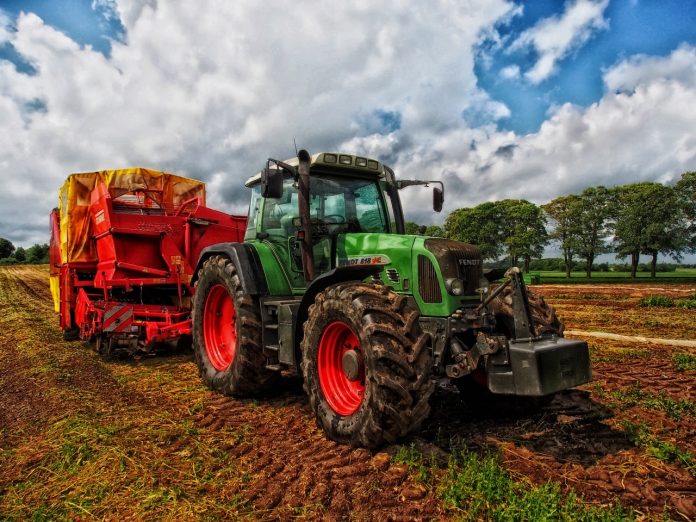* Africa has 60 percent of the world’s uncultivated arable land.
* Africa’s agriculture sector records an average productivity rate of 36 percent.
* Africa spends $35 billion annually on food imports.
* Africa is currently the world’s leading importer and consumer of rice.
* Agriculture and agribusiness together are projected to be a US$1 trillion industry in Sub-Saharan Africa by 2030 (compared to $ 313 billion in 2010).
* Agricultural production and agribusiness together constitute an average of around 45 percent of the economy of Sub-Saharan Africa.
* Urban food markets are set to increase fourfold to exceed US$ 400 billion by 2030, requiring major agribusiness investments in processing, logistics, market infrastructure, and retail networks.
* Rice is Africa’s largest and fastest-growing import, valued at US$ 3.5 billion in 2009 or nearly half of total consumption.
* In West Africa, 75 percent of agriculture-related firms are micro or small enterprises, 20 percent are semi-industrial, and 5 percent are industrial. Employees are typically family members, and 50 percent to 90 percent are women.
* As of 2014, only 2 percent of Africa’s graduates are employed in agriculture.
* Women are the primary users of agricultural land in most African communities, yet their access to land on average is less than half that of men. Generally, title and inheritance rights across Africa are bestowed to male family members.
* Assuming that the 6 percent growth target set by the New Partnership for Africa’s Development is met to 2030, and marginal expenditures on food are at 0.5 (down from about 0.6 currently), total food and beverage markets in Sub-Saharan Africa will reach $1,000 billion by 2030, up from $313 billion currently.
* At around $1 billion, the total intraregional trade in food staples is a tiny fraction of Africa’s $25 billion food import bill.
* Africa has the potential to supply some 60 percent of the world’s food needs.
* There are more than 80 million smallholder farmers on the continent.
* African agriculture is made up of 80 percent smallholder farmers who are slowly organizing themselves into clusters of up to 100 farms to achieve economies of scale.
* Africana smallholder farmers lack access to formal credit. Ninety percent of the funds that go into African agriculture come from the farmers themselves.
* It has been estimated that for sub-Saharan Africa, growth generated by agriculture is eleven times more effective in reducing poverty than GDP growth in other sectors.
* In sub-Saharan Africa, an estimated 20 to 40 percent of the crops produced deteriorate after harvest because they cannot be safely stored.
* Post-harvest grain losses in sub-Saharan Africa average US$4 billion every year. This is food that could meet the nutritional needs of around 48 million people.
* Small farms account for 80 percent of all farms in sub-Saharan Africa. In some countries, they contribute up to 90 percent of production.
* In Africa, only about 6 percent of the total cultivated land is irrigated. This compares with 37 percent in Asia.
* 40 million hectares of agricultural land in Africa is physically suitable for irrigation. Yet, the percentage of irrigated arable land is 7 percent, barely 3.7 percent in sub-Saharan Africa alone.
* It is estimated that irrigation alone could increase output by up to 50 percent in Africa.
* An annual increase in irrigation investment of 3.6 percent would triple the irrigated area to 22 million hectares by 2050.
* Farmers in sub-Saharan Africa use less than 13 kilograms of fertilizer per hectare. In contrast, farmers in the Middle East and North Africa use about 73 kilograms, while farmers in East Asia and the Pacific use 190 kilograms.
* There are 800 million hectares of uncultivated land with rain-fed crop potential in sub-Saharan Africa, and virtually none in South and East Asia or North Africa.
* Today, more than one third of the rural population of sub-Saharan Africa lives five hours from the nearest market town of 5,000 people.
* It costs 5 times as much to transport a ton of rice in parts of central Africa than it does on major routes in Pakistan.
* Since 2000, agricultural growth rates in Nigeria and Ethiopia have been above 6 percent per year; rates in Burkina Faso, Sierra Leone, Tanzania, and Ghana have been between 4.0 and 5.2 percent; the continental average is 3.8 percent.
* Agriculture accounts for 26 percent of GDP in Ghana and as much as 46 percent in Ethiopia, compared with 14 percent on average across the continent.
* Urban areas represent roughly 60 percent of the African food economy in terms of total purchased food.
* An estimated one in four people in Africa are without enough food. In sub-Saharan Africa alone, 54 million children under five years of age lack the nutrition
necessary for proper health and development.
* The post-farmgate segments of Africa’s food supply chain (e.g., transportation, storage, processors, distribution) and downstream (retail and food stalls) together form 50-70 percent of food costs to urban Africans.
* African farmers face a majority-urban market when selling food. In West Africa, the urban share in all food consumption (purchased/marketed and home-consumption/production) is about 60 percent, and urban share in purchased/marketed food is roughly 70 percent, as in Southeast Asia currently. In eastern and southern Africa, the respective shares are roughly 40 percent (total food consumption), and 50 percent (marketed food), roughly.
* The global export market accounts for roughly 5 percent, or at most 10 percent, of Africa’s marketed food supply, compared to the 60 percent that is the urban share.
* About 95 percent of the African food market (in value terms) is domestic (local and regional); exports and imports constitute the rest.
* Producing and selling meat or dairy or fruit to towns and cities earns a farmer 5 to10 times more per hectare than grains.
* Africa’s share of the global agricultural market is a mere 2 percent.
* About 8 percent of the cotton traded in the world market is harvested in Sub-Saharan Africa.
* Close to 80 percent of African cotton is exported in raw form.
* Africa accounts for just about 1 percent of the total global consumption of cotton.













